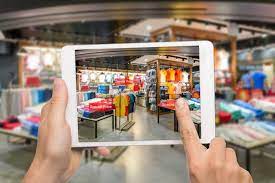Why you are losing out by not adopting AR.

By 2022, the number of mobile augmented reality monthly users could reach 2 billion. Still, some people still say our customers don’t want Augmented Reality. Yet AR is expected to be $150 Billion sector globally. So where is the discrepancy? Why is it some businesses are not jumping on the AR bandwagon whereas others like Facebook and Apple (hardware) or L’oreal, Ikea and Pepsi (software) are lapping it up.
The fundamental issue is that many people don’t even know what AR really is. Everyone is expecting an Iron Man like dashboard with buttons they can press and swipe. Granted that is AR and that future is not too far away, the truth is a majority of us have been exposed to AR unknowingly. Anyone ever use any app that lets you take a photo with funny images on your face like glasses or tiara or zombie makeup. Well all of that is AR.
Augmented Reality is nothing but getting digital reality to interact with our actual reality and a multitude of companies are executing it aplomb. Both Facebook and Apple have been known to be expanding in that direction as covered by various media. Whereas other companies particularly in the ecommerce, real estate, hospitality and healthcare sector are quickly updating their portfolio to become AR compliant. Ikea has been a leader in this field by adopting AR into their sales channels a couple of years back so as to be a step ahead of the curve.
So why is AR important to adopt?
Nielsen reports that, “43% of consumers will adopt store tech if it alleviates time and provides seamless interaction.” That means almost half your customer base is willing to try it if AR can ease their burden. What that also means is that companies need to be creative in the ways they use AR as well as functional.
So the question really is how to adopt AR and not make it look like just a gimmick? For example if you are an E-commerce company focused on clothing then some of the features you would need to incorporate would be
- Virtually try on an item by visualizing it on your own face or body,
- Project a live model with your clothing size into your room to see her walk, turn, sit and stand,
- Zoom-in to see the sheen and texture of textile,
- Choose styling options and try accessories for completing an outfit,
- Scanning a color to find pieces that complement,
- Capturing your foot to find a perfectly sized shoe.
Once a consumer gets access to such features then there is no room for doubt. No more fears about fit or function. No more questioning if the dress or bracelet will look right with the shoes. It takes AR from being a gimmick to an expectation for those who want to make the best buying decisions.
As the brand, you will find reductions in returns as customers make smarter decisions in the buying phase. Cross-selling opportunities expand as styling and accessorizing take center stage with just a click. The disruptive tech can garner greater market share from new audiences: Consumers who have never tried your brand that have uncertainty about fit will find that concern alleviated.





